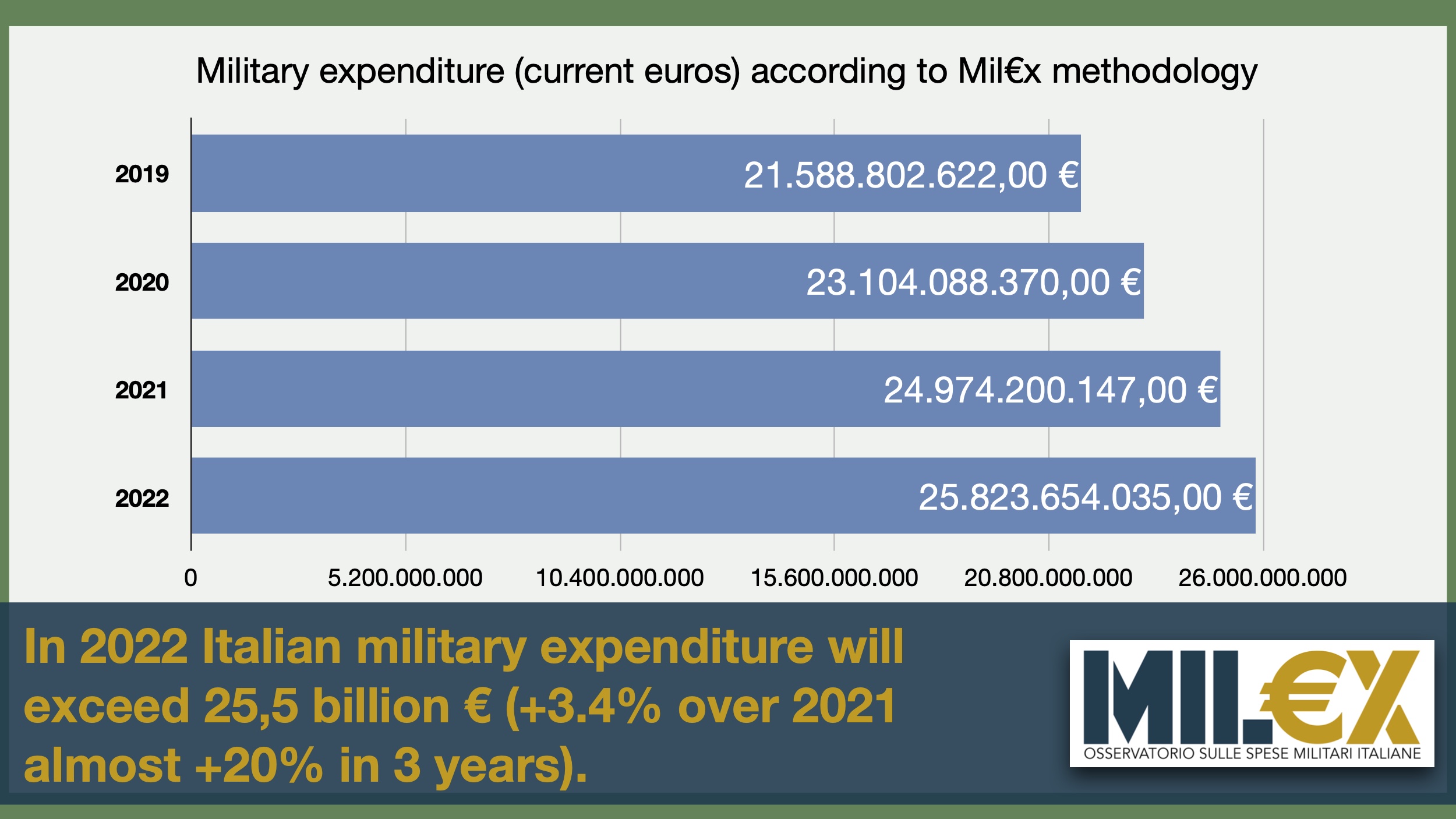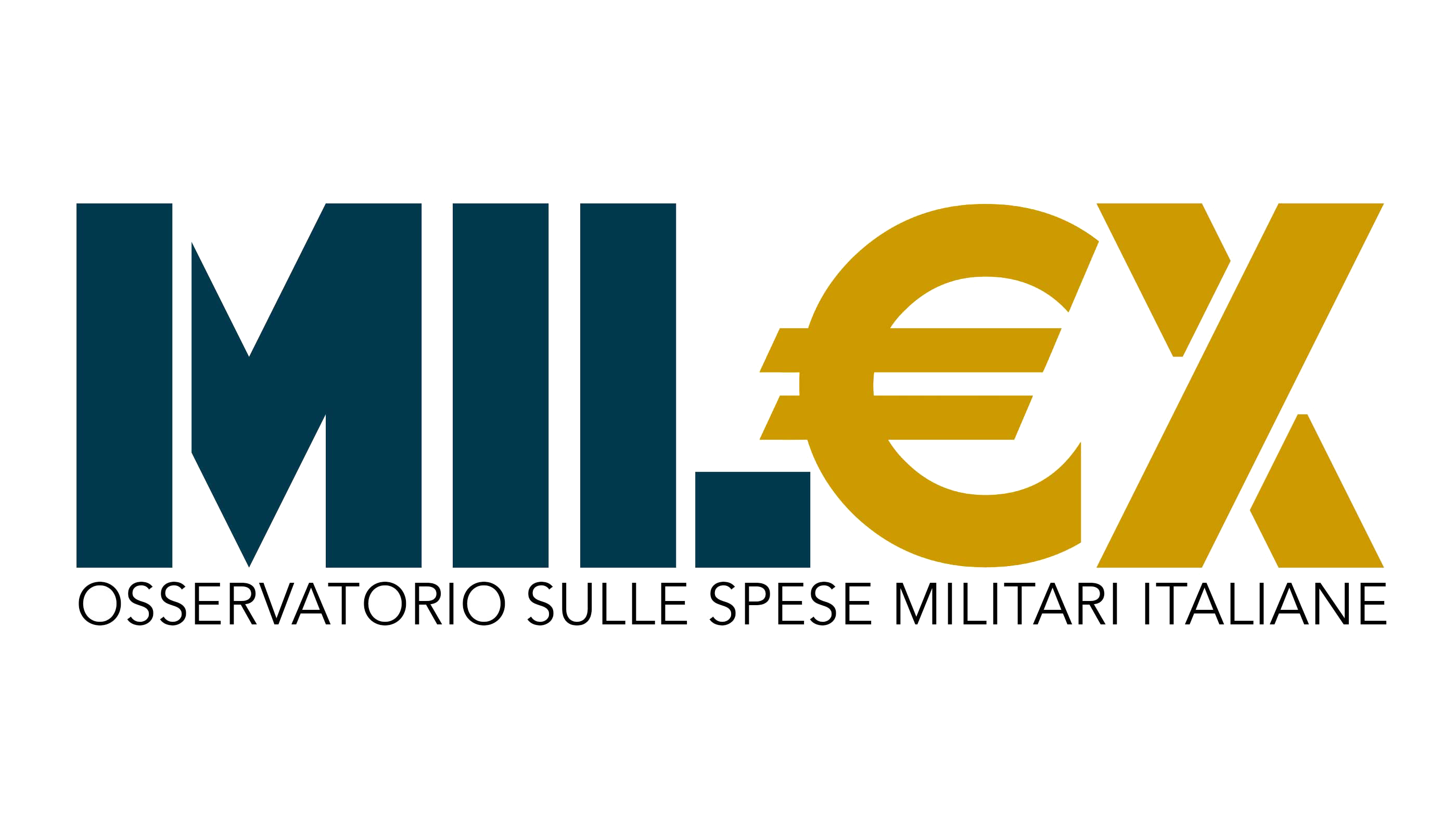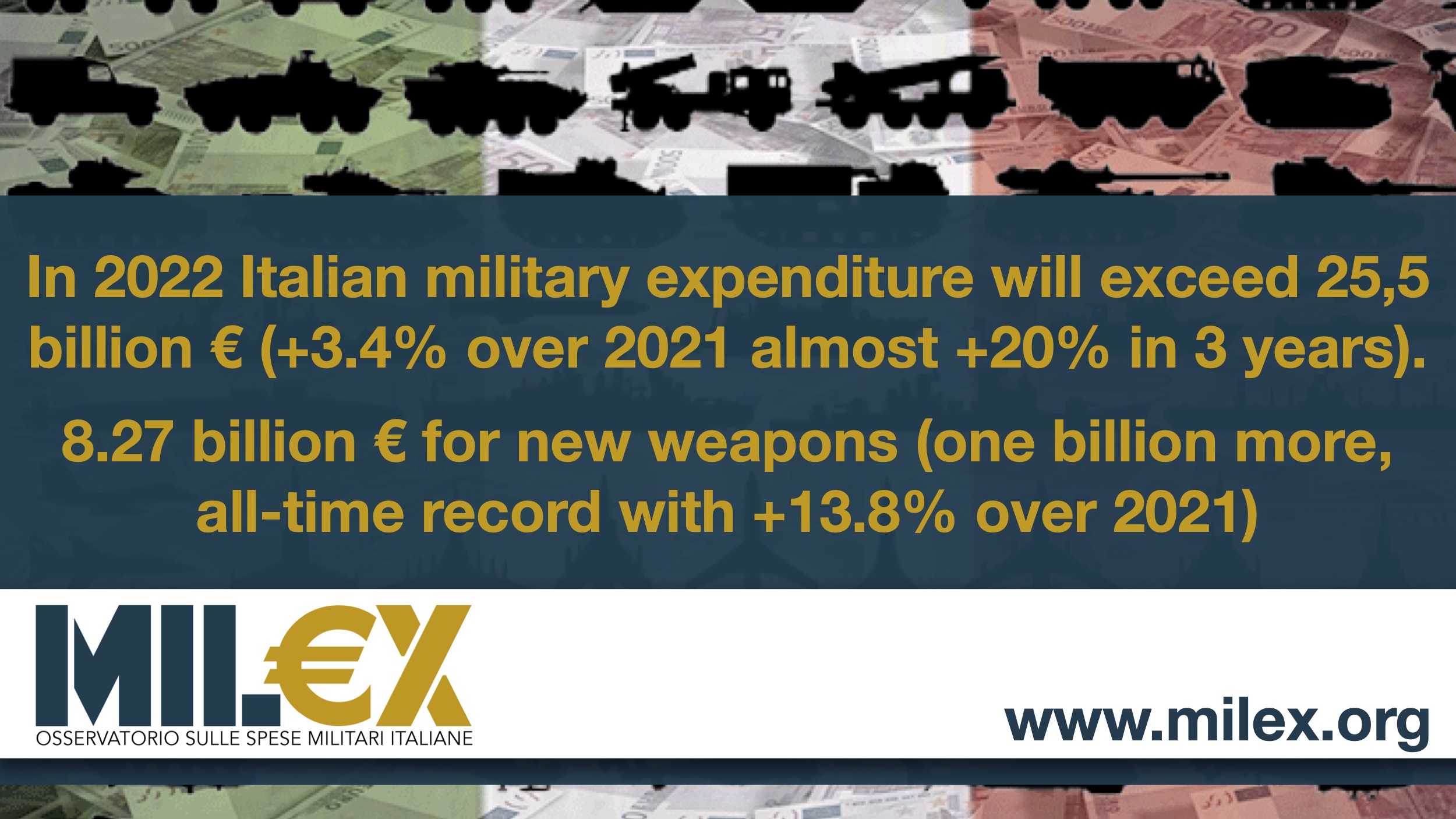The increase of 1.35 billion euro in the Ministry of Defence budget (+5.4%) is driving the growth of overall Italian military spending as calculated by the Mil€x Observatory. The 25 billion mark has been crossed (25.82 billion in total), an increase of 3.4% over 2021 and a leap of almost 20% in three years. One billion more for the purchase of new armaments: 8.27 billion in total (an all-time record), an increase of 13.8% compared to last year, with a jump of 73.6% in the last three years (+3.512 billion compared to 4.767 billion in 2019).
The robust growth of the budget for the Ministry of Defence and of overall military spending continues in the projected 2022 Italian State Budget. The discussions on the funds being debated in Parliament do not therefore affect spending decisions stemming from the past (in particular, from the multi-year investment funds, largely earmarked for Defence), which make around €850 million more than last year available to the Armed Forces.
The increase for 2022, once again clear and significant, is driven by the Ministry of Defence’s own budget, which totals almost €26 billion (precisely €25,935 million), an increase of €1,352 million (+5.4% compared to 2021). Even more than usual, as already mentioned, this is an increase deriving from decisions taken in the past: the budget under “current legislation” already provided for an overall total of €25,904 million for the Ministry of Defence, therefore only adjusted by about €31 million by the decisions under discussion now (Section I of the Budget Law).
The internal funds of the Defence budget show increases of between 150 and 200 million euros for the Navy and the Carabinieri, a decrease of 90 million for the Air Force and a substantial confirmation of the budget for the Army. The increase in appropriations for the chapters of the General Staff and the Defence General Secretariat (together with the political and budget offices) is much more robust: around 1.2 billion Euros more, mainly due, as we shall see, to appropriations for the procurement of new weapons systems.
As we have always stressed, the total amount of the Defence Budget is only the starting point for assessing overall Italian military spending, which must also include figures entered in other ministries (mainly the fund for military missions abroad, which is set up at the Ministry of Economy and Finance, and the funds made available by the Ministry for Economic Development for the acquisition and development of weapons systems), and must instead see the vast majority of the Carabinieri budget subtracted for consistency of destination and type of use (due to the specific role played by this structure, in particular the Forestal Service part), which is considered only for the component linked to missions abroad.
The new methodology of the Mil€x Observatory on military expenditure, updated and improved in 2021, also provides for other considerations (share of the cost of US bases, depreciation of loans on MISE arms expenditure, impact of military pensions) leading to a trend assessment of total “direct” military expenditure for 2022 of about €25.82 billion (which becomes €26.49 billion with additional indirect costs). This means an increase of €849 million compared to the same assessments made for 2021, with a percentage increase of 3.4% over the previous year and even 11.7% over 2020 and 19.6% over 2019.

As is evident from the main parts in the budget, once again we are faced with an increase linked in particular to new investments in weapons systems, with funds that, moreover, are increasingly made available directly to Defence, while the share allocated to military investments in the budget of the Ministry of Economic Development is reduced.
As is the case every year, the data are grouped into macro-headings and do not provide any details on which weapons systems will be acquired (as is done in the Defence Ministry’s Multi-year Planning Document), but the destination is clear: on the chapters specifically related to investment, we find just over €5.39 billion (up by a good €1.3 billion) allocated in the Ministry of Defence budget and a total of €2.89 billion (-€350 million compared to last year) in that of the Ministry for Economic Development, which also include, among other funds, €105 million for interest on loans taken out by the State to provide companies with advance payments for specific multi-year weapons projects. This therefore leads to a new record of funds earmarked for the purchase of new weapons, which reach a total of 8.27 billion, one billion higher (+13.8%) than the total figure for 2021 (which in turn constituted an all-time high) and with a jump of 73.6% over the last three years (+3.512 billion compared to 4.767 billion in 2019).
This last figure is a consequence of the unprecedented amount of new rearmament programmes that the Ministry of Defence is submitting to Parliament at a fast pace and which will therefore be launched next year. The upward dragging of military spending is thus determined by the purchase of new weapons with an increasingly marked effect of the multi-year investment funds defined with a timeframe prior to the impact of the pandemic (and therefore not even indebted to the money deriving from the PNRR) but not touched in any way by the Government in the last two State Budgets.

